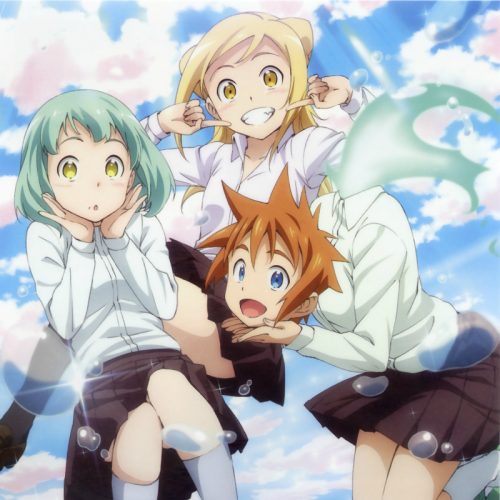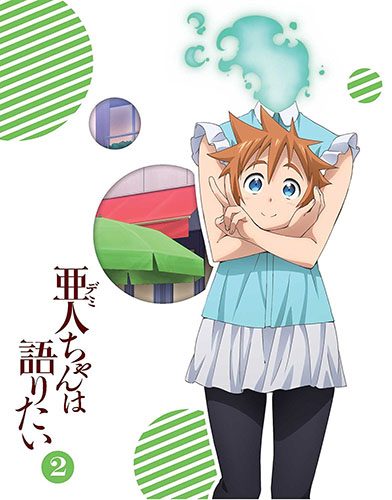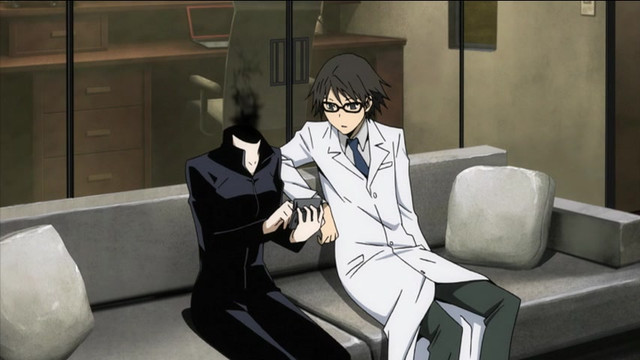
It seems, as of late, that everyone’s losing their heads over dullahans, arguably the most famous legendary creature to come out of Irish folklore since leprechauns. In this article, we’ll be covering a basic history of the mythological beast, its introduction into pop culture, and some dullahans that have shown up in anime. Heads off, let’s go!
Unseelie Origins
Dullahans (sometimes also called Gan Ceann which means “without a head” in Irish) have had a long presence in Irish mythology and are generally considered to be part of the Unseelie fairy (or fae) court, the group of fairies more overtly hostile to humanity, or a type of aos sí, a broad term for supernatural races in Irish and Scottish mythology (note: the term fairy is used to describe a much more diverse group of mythic creatures in Celtic traditions beyond the stereotypical modern idea).
While traditions vary by region and culture, the dullahan is almost always depicted as a decapitated warrior riding a black horse that carries its own head under its arm. Sometimes the head is said to have a phosphorescent glow from its decay that the creature uses to light his way like a lamp. The face is often described as having a hideous grin that splits the head from ear to ear and small-pupil black eyes that dart around erratically like flies and can see for miles around. It’s said that it’s impossible to run from a dullahan as all doors and locks will open for them and that if it speaks your name you will die instantly.
Some other variations have the dullahan driving a carriage decorated with funeral arrangements and made out of human skin and bones that is pulled by six black horses, using a whip made out of a spine, and throwing basins of blood that cause blindness in one eye if encountered. Dullahans are usually male but not always and are also sometimes said to be afraid of gold. In any case, the dullahan is bad news and usually means you or someone else is going to die as they are a herald of death.
Popularization of the Headless Horseman

The idea of the ‘headless horseman’ derives itself from the dullahan and other similar and related European myths but made its way into modern pop culture largely thanks to "The Legend of Sleepy Hollow", a gothic short story by American author Washington Irving in 1820. In this story, the headless horseman was a Hessian artilleryman in the American Revolutionary War who was killed during the Battle of White Plains after being decapitated by a cannonball shot. He rises from his grave each Halloween in search of his head. This story was extremely popular, spawned numerous adaptations and similar stories, and made tales of headless horsemen part of American folklore.
Dullahans in Japan
As with many European mythical creatures, the dullahan eventually found its way into Japanese media such as Konami’s Castlevania series of games and many fantasy and gothic manga and anime. While not explicitly related, there is also a Japanese yokai called a rokurokubi which look like normal humans but have the ability to stretch their necks out to ridiculous lengths or completely detach their heads, which can fly around freely (this type is sometimes called nukekubi).
Dullahans have become a major part of several modern anime series with some notables being Celty Sturluson from Durarara!! who is a modernized interpretation complete with motorcycle and a distinctive cat-eared helmet, Lala from Monster Musume who has chuunibyou and carries around a Grim Reaper-esque scythe, the adorable Kyouko Machi from Demi-chan wa Kataritai (Interviews With Monster Girls) who is really quite normal outside of her head being detached, and Yuri Alpha from Overlord, the vice-captain of the "Pleiades Six Stars" battle maid squad who isn’t particularly dullahan-like with her head being held on with a blue collar around her neck.
Some other instances of dullahans in anime include Demon General Beldia from KonoSuba, Rezo’s minions Dune and Hans from Slayers Evolution-R, and the headless horseman in Kaibutsu Oujo (Princess Resurrection). Hataraku Maou-sama! (The Devil Is a Part-Timer!) also features two bicycles named Dullahan and Dullahan II.
Final Thoughts

Like many other instances of myth and folklore, the dullahan has gone through a variety of changes from its Irish origin that have allowed the idea to exist as part of popular culture to this day, leading to some interesting interpretations even leading the former rotten-head undead fairy into cute waifu territory (thanks anime). In any case, dullahans have made a pretty significant mark on recent anime and we at Honey’s are certainly curious as to what the medium will do with the concept going forward.
As always, we hope you enjoyed this article! Please let us know your thoughts in the comments below and look forward to more mythology and anime information from us in the future! Don’t lose your head!

